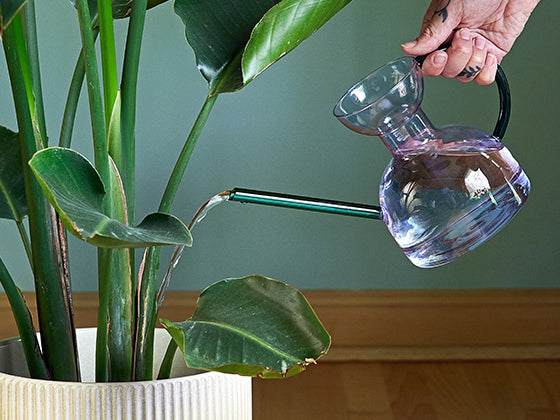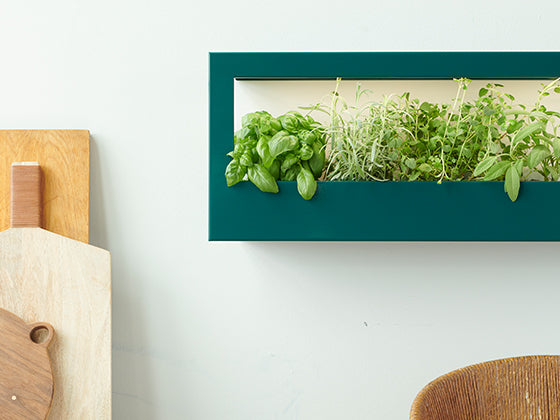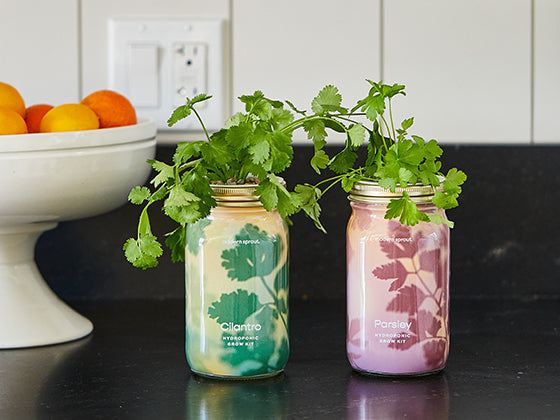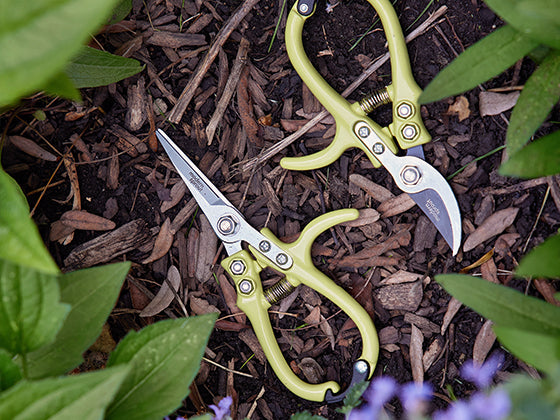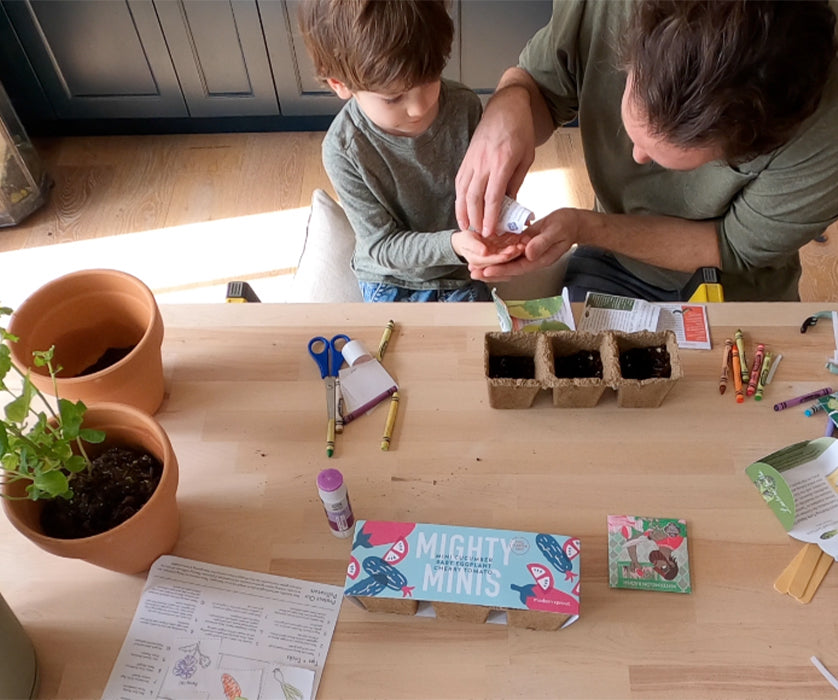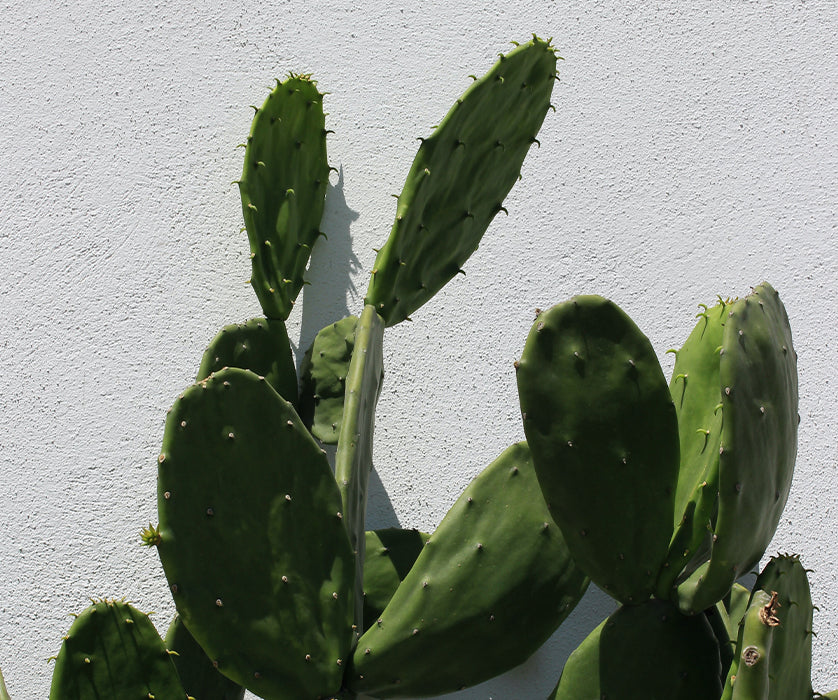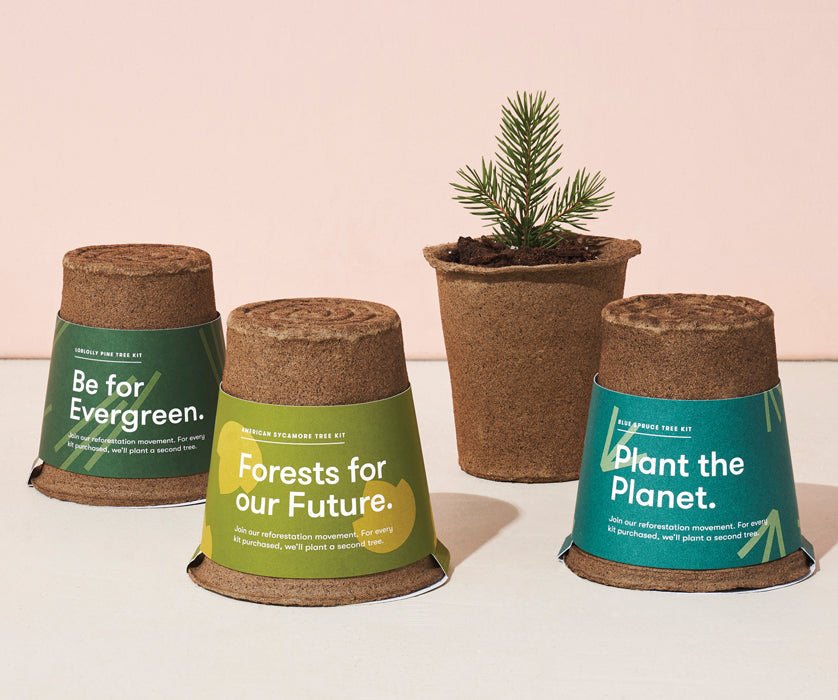If you’ve ever been curious about starting your garden from seed, and even better, getting the kids involved, Modern Sprout’s got you covered! Whether you’re growing a patio pot garden or have a sprawling backyard, you can enjoy fresh veggies and fruits. Follow along as our Co-Founder, Nick, and his sidekick, Roger, share tips and tricks to starting your garden. You can also download and print our Garden Activity Map here!
Early spring is the perfect time to start your outdoor garden. For most plant types, start seedlings 4-8 weeks before the last frost date. Click here to determine your region’s date.
It is important to grow seedlings indoors to ensure they’ll have a strong start, are safe from pests and are protected from the elements. Additionally, this will earn you a longer growing season and access to some diverse seed varieties. (There’s a reason people rave about heirloom tomatoes – they’re delicious)! There are thousands of varieties of seeds, but only a few of them are grown as transplants and available at garden centers. At Modern Sprout, we always recommend starting from seed!
When planning your garden, here are some things to consider:
– What you want to grow
– How much space you have
– Access to water
– Pollinator-friendly flowers
The latter is so important! Incorporating pollinator-friendly flowers into your garden will not only boost your yields, it also provides a vital habitat to these critical creatures. We’ve introduced several seed starting products to support pollinator habitats – our Pollinator Seed Pops are a favorite.


On our Garden Starter Map, each square represents 1 square foot. Different plant types have different spacial needs for successful growth. The number next to each plant type represents how many of each plant can be grown in a given square foot of soil. The map also includes suggested plant pairings and some more garden planning tips.
Once you’ve created your Garden Map, you can purchase seeds and soil. Most local garden centers carry a variety of fruit, vegetable, herb and wildflower seeds. In many parts of the country, you can start seeds indoors in late March. Once your seedlings have 2-3 sets of leaves and your region’s last frost date has passed, you can transplant your seedlings outside.
Be mindful that not all seeds will sprout, this is Mother Nature at work! It is best to start more seeds than you think you’ll need and then select from the healthiest looking seedlings once it’s time to transplant.
Before you transplant your seedlings into the ground, be sure to harden them off. “Hardening off” means adapting seedlings to their new environment and climate. You can harden off by placing seedlings outside in the shade and out of the wind for a few hours each day over the course of 1-2 weeks.
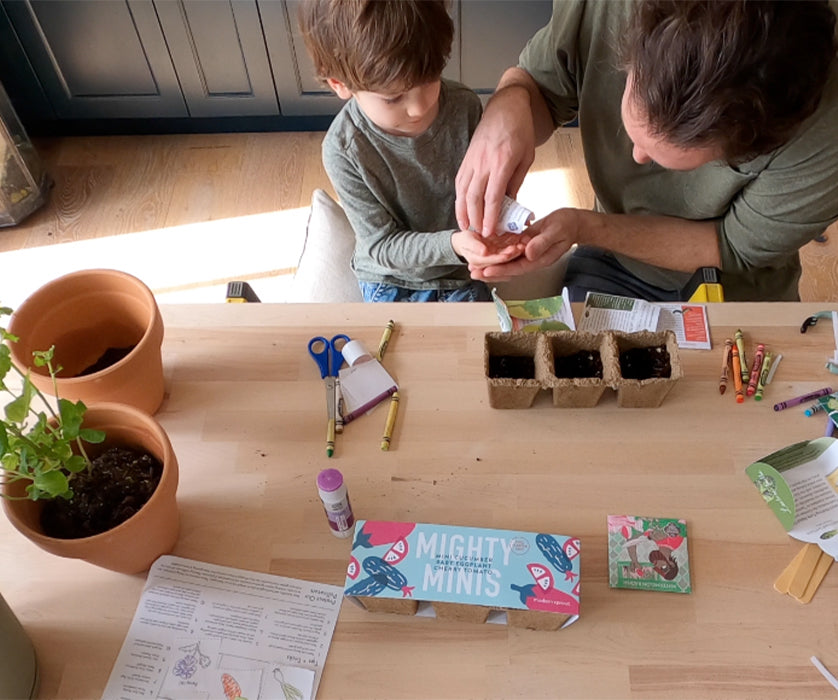

When you transplant your seedlings, be careful with their root systems. It is best to use natural biodegradable pots rather than plastic pots because they can be planted directly into the ground. Our Seed Starter Trios are the perfect outdoor garden starter kit.
Now that your plants are in the garden, be sure to water and feed them regularly. Watering can vary by region, but generally if the soil is dry and the plant leaves are sagging a little, this is a tell-tale sign your plants need a feeding! Follow the instructions on fertilizer packaging to give your plants the proper nutrients. Connect with us @modsprout to share how you grow!

